Historical Dictionaries of
Ancient Civilizations and Historical Eras
Series Editor: Jon Woronoff
1. Ancient Egypt, by Morris L. Bierbrier, 1999. Out of print. See No. 22.
2. Ancient Mesoamerica, by Joel W. Palka, 2000.
3. Pre-Colonial Africa, by Robert O. Collins, 2001.
4. Byzantium, by John H. Rosser, 2001.
5. Medieval Russia, by Lawrence N. Langer, 2001.
6. Napoleonic Era, by George F. Nafziger, 2001.
7. Ottoman Empire, by Selcuk Aksin Somel, 2003.
8. Mongol World Empire, by Paul D. Buell, 2003.
9. Mesopotamia, by Gwendolyn Leick, 2003. Out of print. See No. 26.
10. Ancient and Medieval Nubia, by Richard A. Lobban Jr., 2003.
11. The Vikings, by Katherine Holman, 2003.
12. The Renaissance, by Charles G. Nauert, 2004.
13. Ancient Israel, by Niels Peter Lemche, 2004.
14. The Hittites, by Charles Burney, 2004.
15. Early North America, by Cameron B. Wesson, 2005.
16. The Enlightenment, by Harvey Chisick, 2005.
17. Cultural Revolution, by Guo Jian, Yongyi Song, and Yuan Zhou, 2006.
18. Ancient Southeast Asia, by John N. Miksic, 2007.
19. Medieval China, by Victor Cunrui Xiong, 2009.
20. Medieval India, by Iqtidar Alam Khan, 2008.
21. Ancient South America, by Martin Giesso, 2008.
22. Ancient Egypt, 2nd ed., by Morris L. Bierbrier, 2008.
23. India, by Kumkum Roy, 2009.
24. The Etruscans, by Simon K. F. Stoddart, 2009.
25. Modern China (18001949), by James Z. Gao, 2009.
26. Mesopotamia, 2nd ed., by Gwendolyn Leick, 2010.
Historical Dictionary
of Mesopotamia
Second Edition
Gwendolyn Leick
Historical Dictionaries of Ancient Civilizations
and Historical Eras, No. 26

Published by Scarecrow Press, Inc.
A wholly owned subsidiary of The Rowman & Littlefield Publishing Group, Inc.
4501 Forbes Boulevard, Suite 200, Lanham, Maryland 20706
http://www.scarecrowpress.com
Estover Road, Plymouth PL6 7PY, United Kingdom
Copyright 2010 by Gwendolyn Leick
All rights reserved. No part of this book may be reproduced in any form or by any electronic or mechanical means, including information storage and retrieval systems, without written permission from the publisher, except by a reviewer who may quote passages in a review.
British Library Cataloguing in Publication Information Available
Library of Congress Cataloging-in-Publication Data
Leick, Gwendolyn, 1951
Historical dictionary of Mesopotamia / Gwendolyn Leick. 2nd ed.
p. cm. (Historical dictionaries of ancient civilizations and historical eras ; no. 26)
Includes bibliographical references.
ISBN 978-0-8108-6182-4 (cloth : alk. paper) ISBN 978-0-8108-6324-8 (ebook)
1. IraqHistoryTo 634Dictionaries. I. Title.
DS70.82.L45 2010
935.003dc22 2009021887
 The paper used in this publication meets the minimum requirements of American National Standard for Information SciencesPermanence of Paper for Printed Library Materials, ANSI/NISO Z39.48-1992.
The paper used in this publication meets the minimum requirements of American National Standard for Information SciencesPermanence of Paper for Printed Library Materials, ANSI/NISO Z39.48-1992.
Printed in the United States of America
Contents
Jon Woronoff
Editors Foreword
Mesopotamia was one of the oldest and broadest cradles of civilization. Unlike Egypt, which was a relatively unified state, it was the site of many different city-states, kingdoms, and empires, frequently at odds with one another, and replacing one another as the locus of powerAkkad, Ur, Babylon, the Kassites, Isin, Assyriaand then tending into the more modern Achaemenid, Seleucid, Parthian, and Sassanian dynasties. The transfer of power resulted from a superior capacity in warfare, not so different from our times, and the rise of great leaders such as Sargon of Akkad, Hammurabi, Nebuchadnezzar, Darius, and Alexander the Great. All the while, the Mesopotamians also are known to have been practicing the arts of peace; developing agriculture, metalworking, and trade; devising forms of writing; constructing monumental buildings; organizing an administration and bureaucracy; worshipping various gods; laying down laws; and determining who was higher and who was lower in societyagain, not so different from our times. That is why Mesopotamia remains so intriguing, showing where we came from and part of how we got where we are, and maybe even giving us some insight into where were heading.
The message would obviously be much clearer if, like Egypt, there had been a relatively unified state rather than many statelets that tended to wipe away earlier traces left by predecessors, and if the sands of timeand the deserthad not covered over so many of their remains. Thus, what we have been able to uncover, and do know with a reasonable degree of certainty, is particularly precious. So it is nice to have much of it presented in a handy form by the Historical Dictionary of Mesopotamia.
The dictionary section helps us sort out the many city-states, kingdoms, and empires; the famous and less well-known rulers (some far from glorious); the arts of war and the arts of peace; the signs of a . The bibliography is very helpful in suggesting in some detail where further readings can be found.
Writing this book, with its myriad periods and aspects, was no easy task. But it was certainly easier for someone, Gwendolyn Leick, who has already written several books on the ancient Near East and its architecture, literature, and mythology, as well as a whos who and an introduction to the Babylonians. Dr. Leick has spent nearly three decades studying, lecturing on, and writing about Mesopotamia. She has also taught at the universities of Glamorgan, Cardiff, and Reading, and in London, and is a fellow of the Royal Anthropological Institute. This long and varied experience is the basis for the latest volume in the steadily growing series of Historical Dictionaries of Ancient Civilizations and Historical Eras.
Jon Woronoff
Series Editor
Readers Note
The pronunciation of ancient names is a modern reconstruction and a convention rather than an accurate phonetic rendering. Although cuneiform writing indicated vowels (unlike ancient Egyptian), it is not clear how they were spoken at any given period. Consonants were sometimes written in several different ways, hard or soft, which indicates that there were phonetic variations (e.g., Hammurapi as well as Hammurabi). Sumerian may have had nasal sounds, but this is not clearly indicated in writing.
Conventionally, the vowels of Sumerian and Akkadian words are pronounced as in German, partly as a result of the pioneering work of German scholars in cuneiform lexicography and grammar. The letter a is therefore as in far, e as in very, i as in is, o as in core, and u as in full. Diphthongs are not in evidence, and two successive vowels, as in Eanna, should be pronounced separately, as in theater. Akkadian, as a Semitic language, had a number of guttural sounds, such as the ayin, the qof, and the throaty h, and several sibilants (sade, sin, and shin), as well as dental t (tet). These are not indicated as such in this volume, except for s in Akkadian words, which is rendered as sh
Next page

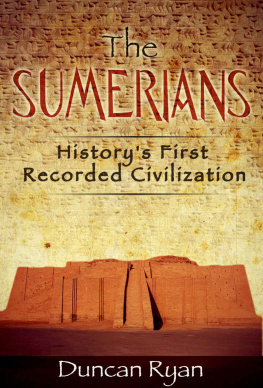
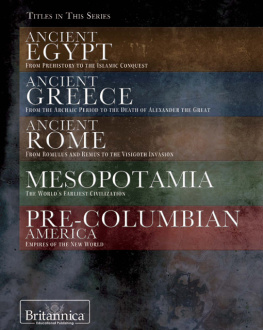
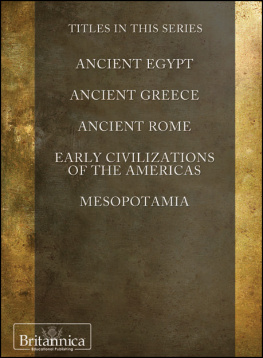

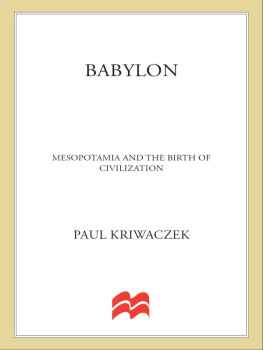
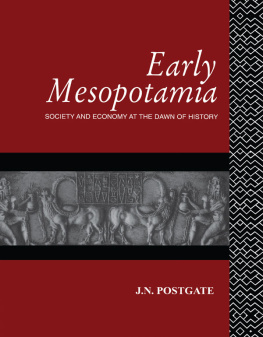


 The paper used in this publication meets the minimum requirements of American National Standard for Information SciencesPermanence of Paper for Printed Library Materials, ANSI/NISO Z39.48-1992.
The paper used in this publication meets the minimum requirements of American National Standard for Information SciencesPermanence of Paper for Printed Library Materials, ANSI/NISO Z39.48-1992.